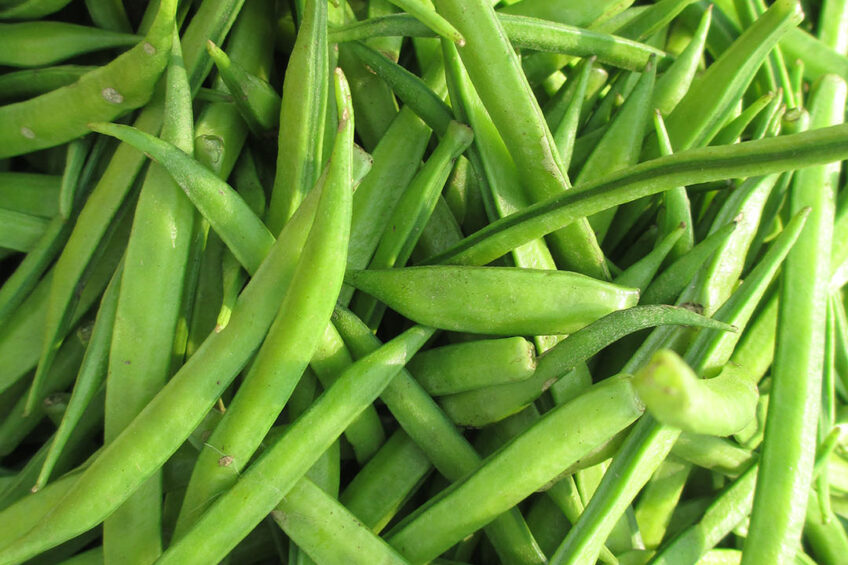Functional oligosaccharides: substitutes for antibiotics in pig nutrition

In the ever-continuing search to find alternatives to antibiotics in swine nutrition, functional oligosaccharides can play a role. As they cannot be degraded easily, they end up in the hindgut where they are decomposed by bacteria and converted into short-chain fatty acids – and that is welcomed by the cell walls. What kinds of oligosaccharides exist and why are they useful?
In swine production systems, dietary antibiotics have been extensively used for prophylactic and growth promotion purposes. They are consistently detected in the pig gut at low and sublethal concentrations. In addition, antibiotic-resistant infections are a universal concern causing cumulative costs up to US $ 100 trillion per year in healthcare and global deaths reaching 10 million by 2050.
Ban in Europe
Due to the negative public health and environmental impacts of antibiotic-resistant bacteria development, the European Union has banned the use of all in-feed antibiotics for growth promotion purposes. Therefore, development and utilisation of new green residue-free feed additives are required to minimise or replace antibiotics in swine feed.
Functional oligosaccharides
Functional oligosaccharides are a potential substitute for antibiotics. They increase pig performance, reduce feed to meat ratio, improve disease resistance and gut health and reduce mortality rate. These oligosaccharides are “functional” because the intestine cannot easily absorb them. They do have special physiological functions. Obviously, there is also a group of oligosaccharides that the gut can easily absorb, such as sucrose and maltose. These are known as “common” oligosaccharides.
What are functional oligosaccharides?
Functional oligosaccharides are compounds that are not easily degraded in the pig gut due to a lack of digestive enzymes. As a result, they enter the hindgut where they are decomposed. Gut microbiota utilise them and then convert them into short-chain fatty acids.
Functional oligosaccharides are defined as low molecular saccharide polymers comprising 2 to 10 monosaccharide groups that are connected by the same or different glycosidic bonds. Their chains are linked to lipids or to compatible amino acid side chains in proteins. Their physical and chemical characteristics include low calorific value, stability, non-toxicity, high viscosity and strong hygroscopicity.
Importance of functional oligosaccharides
Functional oligosaccharides enhance the proliferation of beneficial bacteria and prohibit harmful micro-organisms in the pig’s gut. In addition, they decrease gut pH value, and reduce serum cholesterol and neutral fat. They also improve blood sugar, increase mineral absorption, and improve feed conversion efficiency. Functional oligosaccharides also maintain gut microbiota structural homeostasis and improve immune system function. Other functions include cell recognition, cell interaction and cell adhesion. The best known functional oligosaccharides in swine nutrition are discussed below.
Xylo-oligosaccharides
Where to find them?
Found naturally in various food sources such as milk, honey, vegetables, fruits, bamboo shoots, corn cobs, straw, rice bran, wheat bran, rice husk, cottonseed shell and other agricultural waste.
What do they consist of?
They are functional oligosaccharides with low viscosity mainly comprising two to ten xyloses, xylobiose, xylotriose and/or xylan linked by glycosidic bonds.
What are their characteristics?
Solid xylo-oligosaccharides are light yellow or light brown powder with high heat and acid resistance and good stability. High-temperature cooking, acid extraction and chemical-enzyme linked methods can extract and prepare xylo-oligosaccharides.
What benefits do they have?
Xylo-oligosaccharides promote beneficial gut microbiota, prevent the adhesion of harmful bacteria to the gut tract, improve immune system function, promote the digestion and utilisation of nutrients and improve growth performance and antioxidant capacity.
Mannan oligosaccharides
Where to find them?
Commonly found in guar bean gum, sesbania gum, konjac powder and yeast microbial cell walls.
What do they consist of?
Mannan oligosaccharides comprise complex carbohydrate molecules, including mannose-molecules or mannose-glucose that are connected by glycosidic bonds.
What are their characteristics?
Mannan oligosaccharides are water-soluble but are insoluble in ethanol, acetone, ether and other organic solvents; they are resistant to high temperature and easily absorb moisture.
What benefits do they have?
Mannan oligosaccharides improve pig performance, prevent lactate accumulation in the digestive tract, stabilise gut pH, decrease the production and absorption of toxic molecules, improve nutrient digestibility and promote gut health and immune system function of pigs.
Chitosan oligosaccharides
Where to find them?
In shrimp shells and crab shells.
What do they consist of?
2 to 10 glucosamines for them, linked by glycosidic bonds.
What are their characteristics?
They are natural cationic basic saccharides with less than 3,000 units in molecular weight. They have proper water solubility and are partly soluble in methanol but insoluble in ethanol. Chitosan oligosaccharides metabolites are non-toxic and antigen-free. They are not degraded in the pig gut, thus gut cells can easily absorb them into blood circulation.
What benefits do they have?
Chitosan oligosaccharides have antibacterial, anti-tumour and antioxidant functions; enhance average daily gain, average daily feed intake and weight gain to feed consumption ratio; regulate gut microecological environment; improve digestion and absorption of nutrients; increase placental amino acid transport capacity; and improve immune system function.
Fructo-oligosaccharides
Where to find them?
Found naturally in plants such as onion, chicory, garlic, asparagus, banana and artichoke, among many others.
What do they consist of?
They comprise linear chains of fructose units on the basis of sucrose molecules linked by glycosidic bonds.
What are their characteristics?
Solid fructo-oligosaccharides are white water-soluble powder and are low in sweetness and energy.
What benefits do they have?
They promote the abundance of beneficial gut bacteria; inhibit the growth and reproduction of harmful bacteria; increase the digestion and absorption of nutrients; improve the microecological environment and immune system function; increase average daily gain, average daily feed intake and dry matter and nitrogen digestibility; and relieve oxidative stress in pigs.
Application of functional oligosaccharides
The effect of functional oligosaccharide feed additives is related to factors including feeding environment, physiological stage, types and dosage of functional oligosaccharides and the supplemental level of oligosaccharides in feed. When pigs are in a poor feeding environment, functional oligosaccharides regulate gut health and affect immune system function. The gut structure and function vary in different physiological stages of pigs.
For example, functional oligosaccharides improve the growth performance and the gut microbiota of weaned piglets more significantly than for pigs at the growth stage. Functional oligosaccharides produced by different types and manufacturers have significantly different effects.
High dosage of functional oligosaccharides increases feed and feeding cost and fails to increase beneficial bacteria or reduce harmful bacteria, thus leading to diarrhoea. In addition, inherent levels of functional oligosaccharides in diets affect the experimental results of supplementation.
Concluding remarks
Functional oligosaccharides are potential green and pollution-free substitutes for antibiotics. Factors including feeding environment, physiological stage, types and dosage of functional oligosaccharides and the supplemental level of oligosaccharides in feed affect the function of functional oligosaccharides. They improve growth performance, immune system function and the gut health of pigs. However, further research is necessary to focus on relevant factors affecting the function of functional oligosaccharides. In addition, further exploration to find a stable role for their use as feed additives is necessary.
* References will be provided upon request.











